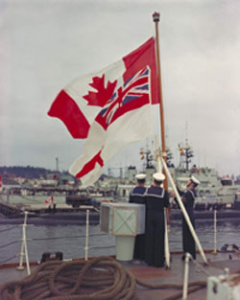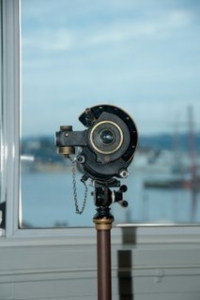In the navy, just as in other walks of life, there is a right and a wrong way to do things. That rightness or wrongness is determined by social codes, consensus and shared understanding.
 Although accepted codes governing the rights and wrongs of behaviour at sea and on land have evolved over centuries, some things should never go out of style, especially courtesy and consideration for others, as Frederick Grubb points out in his notes on Naval Customs and Social Usage.
Although accepted codes governing the rights and wrongs of behaviour at sea and on land have evolved over centuries, some things should never go out of style, especially courtesy and consideration for others, as Frederick Grubb points out in his notes on Naval Customs and Social Usage.
Also very much in style, to current thinking, is a sense of rational patriotism. For Canadians, this national pride is often expressed by displaying the Maple Leaf, and, when abroad, by widely advertising the fact that we’re from Canada. But as our article on the Canada Badge notes, the 1940s introduction of a uniform flash that spelled out the wearer’s Canadian identity was not without controversy, and wasn’t popular with everyone in the navy’s leadership.
Ratings, rank and promotions are matters of high importance in a world where individual  status plays such an influential role in governing the social structure. In Substantive and Non-Substantive Rates in the RCN, LCdr (retired) Dave Freeman looks at some of the definitions and terms surrounding personal – and personnel – advancement.
status plays such an influential role in governing the social structure. In Substantive and Non-Substantive Rates in the RCN, LCdr (retired) Dave Freeman looks at some of the definitions and terms surrounding personal – and personnel – advancement.
In Referring to a Canadian Warship, the author identifies the correct terminology and proper usage of terms and phrases that relate to Her Majesty’s Canadian Ships, and also examines how the terminology is often misused or misunderstood.
In his article about RCN Nominal Lists, LCdr Freeman explains the difference between crew lists and nominal lists, and why these records and other resources like the Canadian Naval Lists contain useful information for family members and researchers interested in the lives of ships and those who serve in them.
By Clare Sharpe
Museum staff member/webmaster
